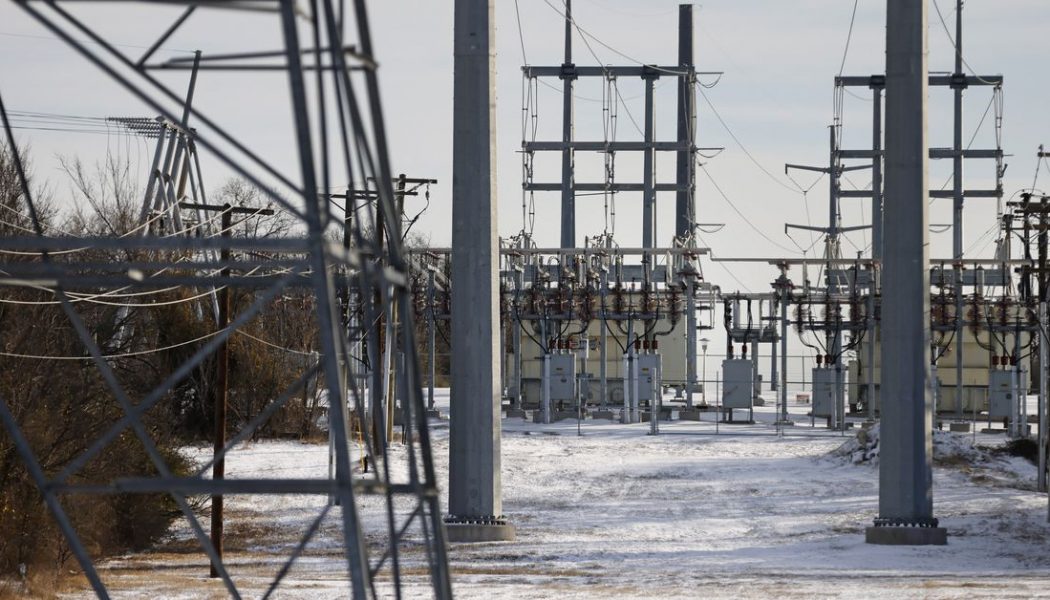
Texas’ massive energy crisis didn’t have to happen, experts say — and it doesn’t have to happen again. Authorities can start working on solutions now that could prevent future blackouts. But unless the state gets to work fast, its energy system will be vulnerable to the next shock.
For starters, Texas’ grid needs to prepare for more blows from extreme weather, and the change can’t stop there. Upgrading homes and buildings is a straightforward way to keep people safe during catastrophic conditions like this week’s cold snap. Emergency response efforts need an update, too.
Michael Bates, general manager of Energy at Intel, lives in Austin where he and his mother have not had power for three days. “She’s 86 years old and living like a pioneer woman in front of the fireplace,” Bates says. “To me, it’s unnecessary. There is technology today that, if we deploy properly, the next time this goes around, the pain will be much less.”
Bates is working to develop smart grid technology at Intel that can figure out where energy is being wasted so that power can be deployed where it’s actually needed in a crisis. There was outrage, for example, over empty brightly lit skyscrapers that loomed over downtown Houston on Monday night while more than 1.3 million people around the city faced imminent outages. Utilities said that some neighborhoods avoided blackouts because they were near hospitals or other critical infrastructure that needed to keep power. That uneven distribution of outages wouldn’t be an issue with a smart grid, says Bates. “In laser, scalpel-like precision, you can turn the building lights off or down … and avoid having to do the rolling blackouts by being able to connect in real time to those assets.”
That kind of upgrade to the grid can also make it easier to tap energy from distributed resources like residential solar panels or even electric vehicles. When connected to batteries and smart grids, renewable energy sources can provide consistency on par or even better than the system we have now that relies on fossil fuels. “The industry might see it as it’s highly disruptive, but the solutions and the technology are not that complicated. They exist today, it’s just how do we apply them to this problem?” says Bates.
Other fixes rely on rethinking Texas’ energy and infrastructure policies rather than on adopting new technologies. The state’s energy system could still do more to weatherize their system against the cold — something that was recommended after similar cold-induced blackouts in 2011 and 1989. Frozen gas wells and pipes were a big culprit behind current outages, even though authorities knew they were vulnerable to frigid temperatures.
The Lone Star State also lives up to its moniker when it comes to its energy infrastructure. Other states’ grids are interconnected, so one state can draw on power from another state when needed. That’s not the case for most of Texas. “There are parts of the grid on the East Coast or the West Coast that have excess power right now that they could be selling to us, but we just don’t have any way of getting into it,” says Joshua Rhodes, a research associate at The University of Texas at Austin. “Maybe we should be better interconnected with other parts of the US.”
Any makeover of Texas’ power grid — whether it involves making it smarter, or connecting it to the rest of the country — needs to start happening soon. “If we had another storm like this in two weeks, we’d probably have the exact same thing happen. It takes years and decades sometimes to build infrastructure,” Rhodes says. “We should start now.”
Disaster management plans, on the other hand, can shift a lot faster and could achieve some of the same goals as efforts aimed at upgrading the grid. “Focusing on how you deal with emergencies, in terms of actually providing services to people is maybe more productive than thinking about specific upgrades to the grid, sometimes,” says Emily Grubert, an assistant professor of environmental engineering at the Georgia Institute of Technology.
Some of those are simple and already underway. During this storm, communities opened up “warming centers” where people can take shelter in a place with heating if their power is out at home. It’s similar to a strategy that a lot of cities use during heatwaves; they open up “cooling centers” where people can gather for free air conditioning.
Weatherizing homes is another easy way to keep people safe in future weather disasters Grubert and Rhodes say. The added benefit is that better insulation protects against extreme temperature swings in either direction. That’s an important consideration since, overall, climate change is steering Texas toward more extreme heat, not extreme cold.
Ultimately, protecting people from devastating power outages in the future will require anticipating new catastrophes — not just responding to the prior ones. “We tend to see this a lot with infrastructure systems where we have one emergency and we start to want to react to basically prevent this particular emergency from happening again,” Grubert says. “I think what I would rather see us focus on after this event, is really thinking about how we respond to emergency conditions. There’s always going to be something that we didn’t prepare for.”










